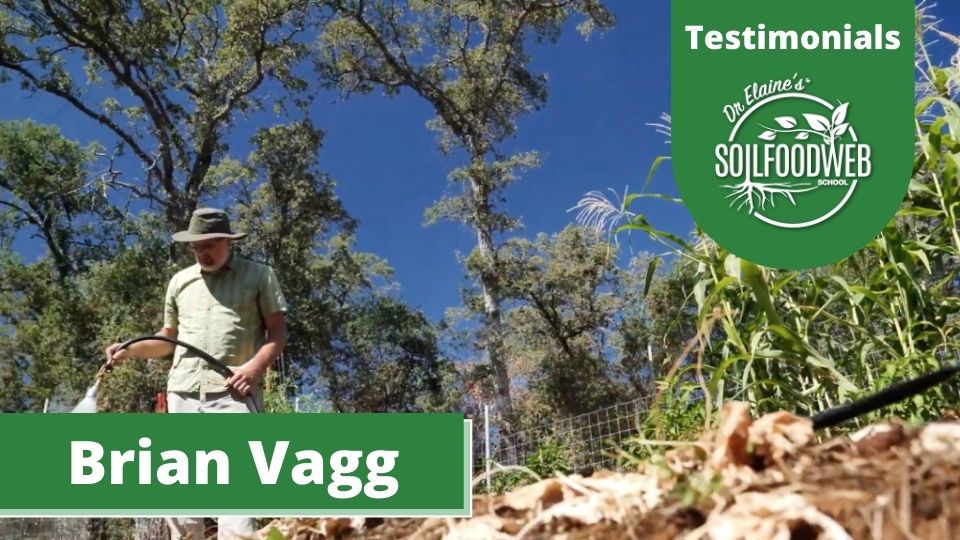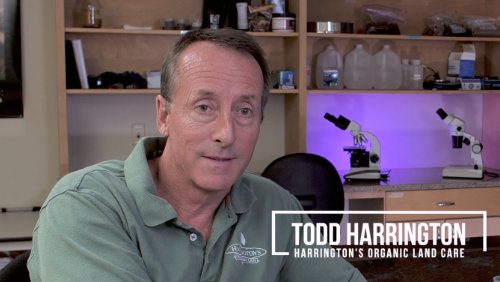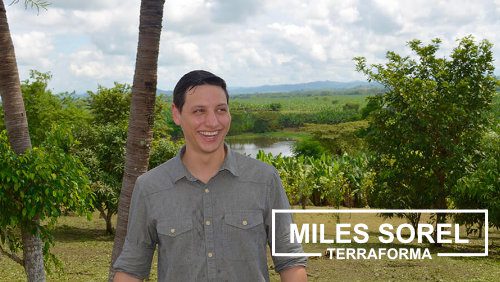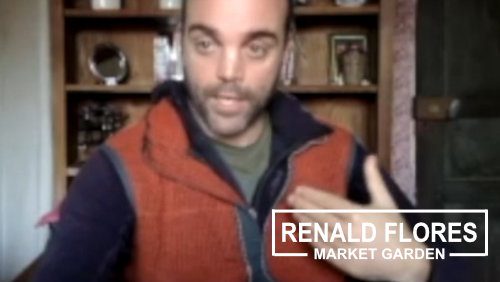Call now to speak with our Student Support Team
SpringBoard your Career in Soil Regeneration
Help farmers, ranchers, and growers to rapidly regenerate their soils with Dr. Elaine Ingham’s Soil Food Web Approach
ON SALE | SAVE 47% TODAY!With Our Comprehensive Online Program and Highly Skilled Mentors, You Can...
Study the Science with
Dr. Elaine Ingham
In this series of 63 lectures, you’ll learn the theory and application methodology behind the Soil Food Web Approach, including how to make, assess, and apply BioComplete™ Compost and liquid inocula.
Develop your Skills with a Dedicated Mentor
You’ll work with a dedicated mentor to complete the 3 stages of the CTP, starting with Stage 1 where you’ll develop your Compost Making and Microscopy skills to the required standard.
Work with the Farmers in your Region
As a Certified SFW Consultant, you’ll have the skills to make Biological Compost, conduct Soil Biology Assessments with the microscope, and help farmers to rapidly regenerate their soils.

Carbon Sequestration
Plants absorb carbon from the atmosphere during photosynthesis and they invest a substantial proportion of this into the soil (~40%) to feed microorganisms. This is the basis of the mechanism that pumps carbon into the world’s soils. It is possible that by regenerating the world’s soils, we may be able to halt climate change.
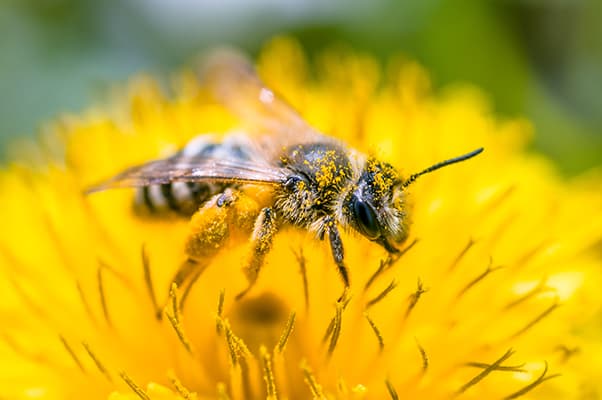
Protecting Insects & Plants
Recent studies have shown that the world’s insect populations have been declining by around 25% every decade for the last 30 years! Bird populations are also plummeting, and other animals are being affected too. The major causes have been identified as habitat destruction and the use of pesticides.
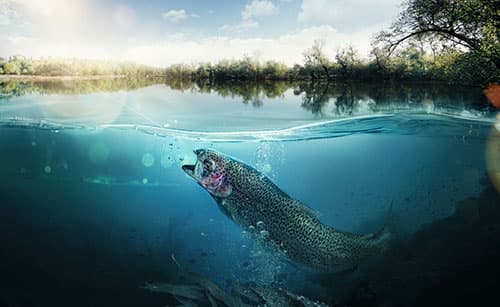
Clean Rivers & Oceans
Typically only about 40% of the inorganic fertilizers, applied by conventional farmers, are absorbed by plants. The rest pollutes our air, rivers, lakes and oceans, causing major damage to those ecosystems and to the world’s oceans. With the Soil Food Web in place and the use of regenerative practices, inorganic fertilizers are not required.
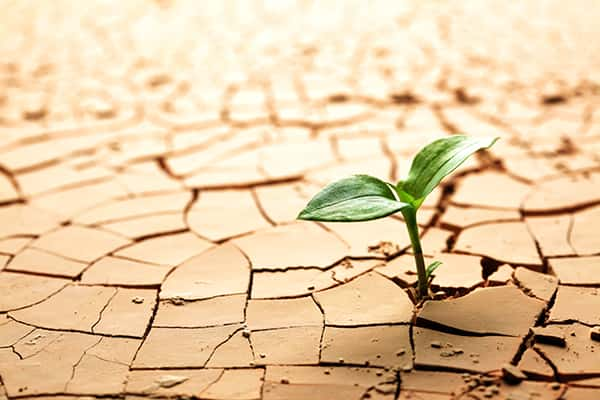
Prevent Soil Erosion
The earth’s topsoils are being eroded at an alarming rate. The UN has estimated that we only have 60 years left before they are completely depleted. The Soil Food Web is nature’s way of building the structure that prevents soils from being washed-away by heavy rain or blown away by the wind. Intensive plowing and the use of chemicals destroys this structure, leaving the soil vulnerable to erosion.
Farmers Around the World are Struggling to Find a Better Way
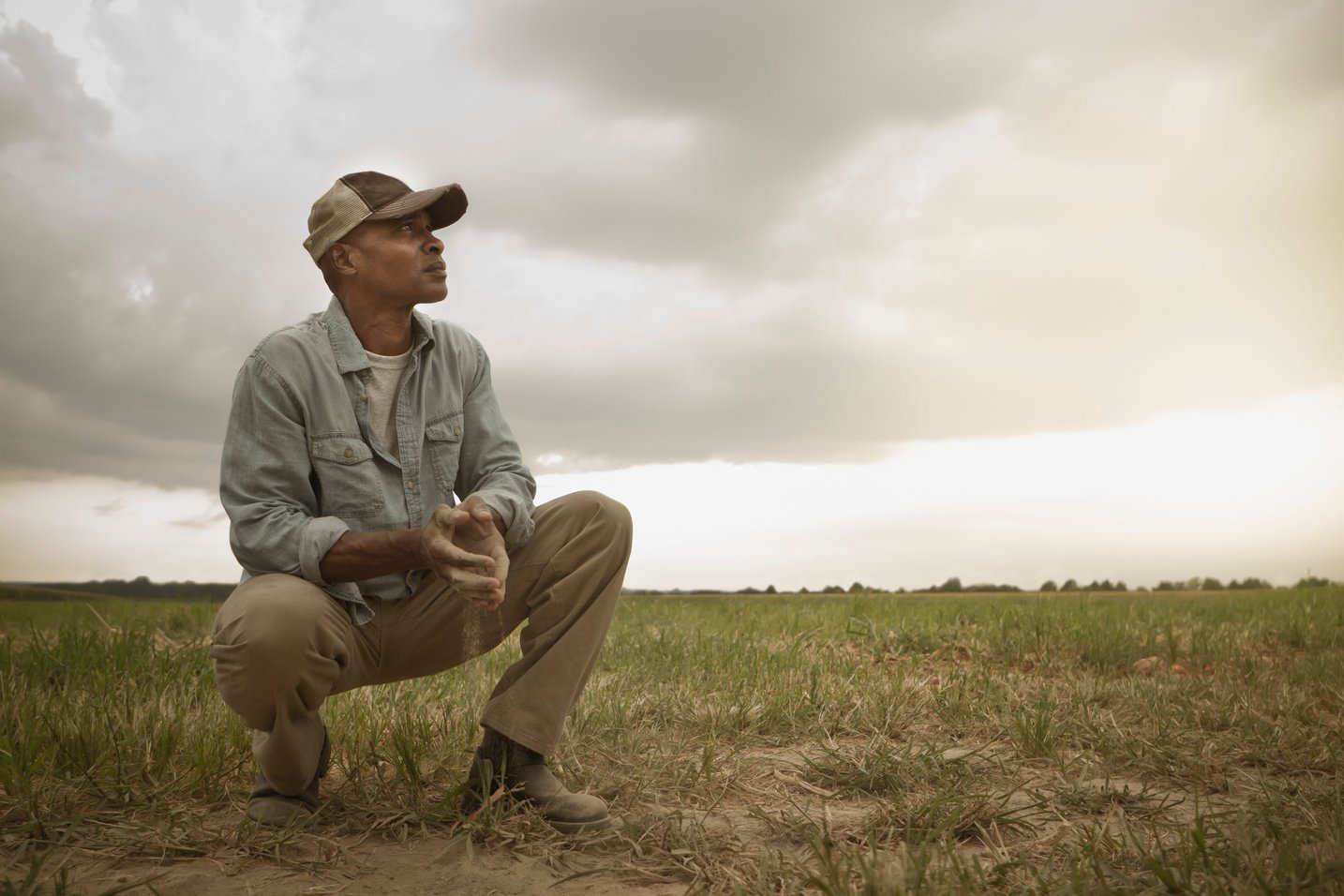
Pests and Diseases
It can feel like it’s a never-ending battle fighting against all the different critters out there that want to take your crops down.
Compaction
Layers of compacted earth result in soil erosion and they make it really tough for plant roots to penetrate deep into the soil profile.
Nutrient Deficiency
Soil fertility is a major problem around the world. This results in lower yields and produce that is nutrient deficient.
Drought and Flooding
As soil structure and organic matter content are degraded over time, the soil’s ability to infiltrate and hold water is compromised.
Low Crop Yields
Many farmers are experiencing diminishing crop yields despite the fact that they are pouring on more and more chemical fertilizer year after year.
Increasing Input Costs
For many farmers, the costs of chemical inputs seem to rise every year, making it harder and harder to earn a living.
These critical issues, along with demand for ecologically produced foods, are motivating farmers, ranchers, and growers to switch to Regenerative Agriculture.
But they need support to make the transition happen rapidly and effectively…that’s where you can help!
The Benefits for Farmers, Ranchers, and Growers
Having a healthy, functional soil results in several benefits that farmers are becoming aware of as the Regenerative Ag movement grows. Many of these benefits can be seen in months, rather than years, once the Soil Food Web is restored. That’s the microbial community that drives the soil ecosystem.
Improved Soil Fertility
With beneficial biology in the soil, plants get to control their own nutrition by exchanging exudates for the nutrients they need, when they need them. Click here to learn more.
Reduced Pests & Disease
The Soil Food Web protects plants from disease-causing organisms and pests in a number of different ways. Click here to watch the video about this.
Increased Yields
Improved nutrition and soil structure as well as protection against pests and diseases are some of the ways in which plants are positively affected, resulting in increased yields. Learn more.
Drought & Flooding
Beneficial soil microbes build soil structure, which enables water to better infiltrate clay soils while increasing the water-holding capacity of sandy soils. Increased organic matter is also very important. Learn more.
Compaction
With the Soil Food Web Approach, we enlist the help of beneficial microbes to build soil structure and we also adopt management practices such as no till to ensure that compaction doesn’t recur. Learn more.
Reduced Input Costs
Your plants can get what they need from the soil once you have the right biology in place. This includes nutrition and protection from pests and diseases. Click here to learn more.
Help the farmers in your community to find a better way
How to Launch Your New Career as a Soil Food Web Consultant
Testimonials
Meet some of the Soil Food Web Professionals who are out there making the change happen in their communities
SFW Consultant, California
After a successful career as a program manager in IT, Brian decided to follow his passion for the environment and healthy food. He now runs a successful consultancy, Sprouting Soils, out of Northern California. His clients include vineyards, orchards. and cannabis growers.
SFW Consultant & Biological Compost Producer, Connecticut
Todd was one of the first to ever train with Dr. Elaine Ingham. He’s built a successful business, producing Biological Soil Amendments and providing consultancy services. Todd’s company, Harrington’s Organics, employs 7 people and has numerous clients around the US and beyond.
Biological Compost Producers, California
From backgrounds in massage therapy and permaculture, Keisha Wheeler and Casey Ernst have built Catalyst BioAmendments, a successful Compost production company, based in Nevada City, California. They make some of the best compost in the state and are expanding rapidly to meet demand.
Can I really do this?
I’m not a scientist/grower
Our training programs are designed for people with no scientific or agricultural background.
Dr. Elaine has an informal teaching style that makes the lectures easy to follow.
You’ll have access to the Student Forum and monthly live Q&A sessions where your questions will be answered.
Will this fit my schedule?
This is a flexible online program, so you can work at your own pace.
The Foundation Courses require a commitment of about 150 hours, and can be completed in as little as 4 weeks, or in as long as 12 months.
Will it work in my region?
The Soil Food Web Approach has been used to regenerate soils on 6 continents, in many different environments, and with numerous different crops, such as Soybeans, Corn, Grains, Vines, Orchards, Hemp, and all kinds of Veggies.
All plants form symbiotic relationships with the microbes in the soil.
What you get with the SpringBoard+ Offer
YOU'LL GET
- 63 Lectures and Quizzes in the Foundation Courses (FC) by Dr. Elaine Ingham.
- Monthly Q&A Webinars with Dr. Elaine and other soil regeneration experts.
- Access to the FC Student Forum where your questions will be answered by Dr. Elaine and her team.
- Downloadable materials including: Course Manuals, Lecture Slides, Glossary, and more.
- Bonus Course 1: Introduction to Permaculture by Graham Bell (18 lectures and Quizzes plus a dedicated Forum)
- Bonus Course 2: Soil Sponge Regeneration Workshop by Didi Pershouse (5 sessions, each 2.5 hrs long)
Holistic and Scientific
Study the science and application methods behind the Soil Food Web Approach, with Dr. Elaine Ingham, in the Foundation Courses.
And enjoy 2 FREE bonus courses, designed to help you prepare for your new, regenerative future!
Once you’ve completed this program you’ll have a deep understanding of what damage has been done to the world’s soils and how to nurture nature back to abundance!
The SpringBoard+ Curriculum
The Soil Food Web Foundation Courses
Foundation Course 1: Introduction to the Soil Food Web
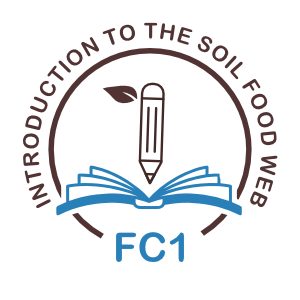
In Foundation Course 1 you will learn:
- About the damage that modern agriculture has done to soils all over the world.
- How Regenerative Agriculture is the soil-ution and how you can rapidly regenerate your soils with the Soil Food Web Approach.
- How the Soil Food Web Approach can be adopted on any scale and in almost any environment, with a multitude of crops.
- About the 4 major groups of Beneficial Microorganisms that are needed to restore ecosystem functions to your soil.
- How Beneficial Microbes work in harmony with your crops to nourish and protect them.
- How benefits such as increased yields, reduced erosion, reduced pest, disease and weed pressures etc. can be achieved.
- About several projects from around the world that Dr. Elaine Ingham has worked on personally.
- About some of the management practices you can adopt to ensure that the biology in your soils is not compromised.
- How soil structure is created by beneficial microbes, improving water infiltration in clay soils and better water retention in sandy soils. And how good structure enables plants and beneficial microbes to penetrate deep into the soil profile, improving plant health.
- How beneficial microbes access the abundance of nutrients stored in the parent material (think sand and clay particles) and how this is then made available to your plants.
- How plants influence the soil biome, by releasing sugary exudates that feed specific groups of beneficial microbes, in return for nutrients.
- How having a balanced soil biome can result in great benefits, such as Weed Suppression and Increased Carbon or Organic Matter content.
Foundation Course 2: Making BioComplete™ Compost
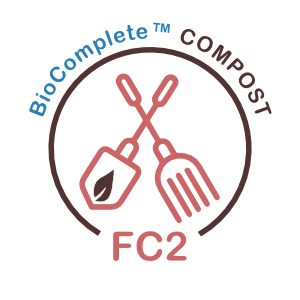
In Foundation Course 2 you will learn:
- About the different definitions of compost and why we consider it as a means of multiplying beneficial microbes instead of just a way of delivering nutrients to the soil.
- How to make your own Biological Compost, using Dr. Elaine’s close-control composting method that enables beneficial microbes to multiply rapidly, while suppressing detrimental microbes.
- Techniques that can be used to balance the biology in your compost, ensuring that the 4 main groups of microbes are present.
- How to apply Biological Compost to your soils so that beneficial microbes can interact with your plants in the root zone, offering nutrition and protection.
- About the various types of methods and equipment that can be used to produce Biological Compost, depending on scale. This includes vermicompost and hot-composting.
Foundation Course 3: Making BioComplete™ Extracts and Teas
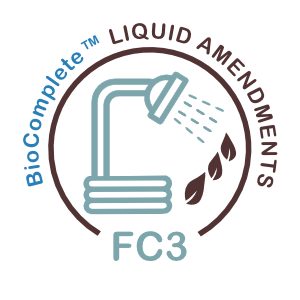
In Foundation Course 3 you will learn:
- How to produce Biological Extracts and Teas from your Biological Compost, using different types of equipment depending on the scale you are operating at.
- About the uses and application methods of Biological Extracts and Teas
- How to apply Biological Liquid Amendments to your soils using different equipment, depending on the scale of your project. And how you can use conventional spraying equipment with some minor modifications.
Foundation Course 4: Introduction to Microscopy
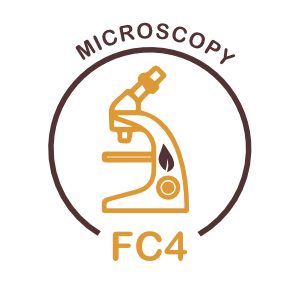
In Foundation Course 4 you will learn:
- How to correctly set-up and use a compound microscope.
- About the biological morphology of the 4 major groups of beneficial soil microorganisms.
- How to identify and quantify the key groups of beneficial microbes that all soils need in order to be fully functional, using the compound microscope. This will enable you to conduct your own soil biology assessments.
- How to process and interpret data.
- How to recognize microarthropods, algae, pollen and other objects in your soil.
Bonus Courses
Introduction to Permaculture
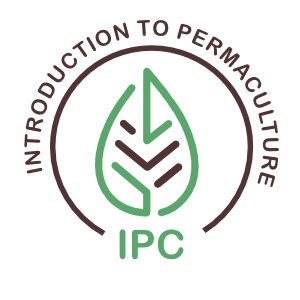
Graham is an internationally respected teacher, author and lecturer in Permaculture and other aligned disciplines over the last thirty years. He was the first person in Britain to be awarded the Diploma in Permaculture by Bill Mollison personally, in 1990. His home in the Scottish Borders with his wife Nancy boasts the longest-standing intentional food forest garden in Britain. Over a thousand visitors a year (in previous times) attest to the amazing productivity of this space.
Course Themes
- What is Permaculture?
- 12 Principles of Permaculture
- Three ethics: Earth Care, People Care, Fair Shares
- Importance of Observation
- Design Sequences
- Why do trees matter and how do they work?
- The Answer Lies in the Soil
- Cycles of Intervention
- Zones, Sectors and Throughputs
What’s Included
- 18 Lectures and Quizzes
- Downloadable Course Materials
- Certificate of Completion
Soil Sponge Regen Workshop

Didi Pershouse is the author of The Ecology of Care: Medicine, Agriculture, Money, and the Quiet Power of Human and Microbial Communities and Understanding Soil Health and Watershed Function. She teaches participatory workshops both in person and online, helping to show the nested relationships between soil health, human health, water cycles, and climate resiliency. She is the founder of the Land and Leadership Initiative and the Center for Sustainable Medicine, and a co-founder of the “Can we Rehydrate California?” Initiative. She is an independent trainer and curriculum developer for the UN-FAO Farmer Field School Program and the Andhra Pradesh Community Managed Natural Farming Initiative in India. She was one of five speakers at the United Nations-FAO World Soil Day in 2017.
Healthy soil is the fundamental infrastructure that makes life on land possible, but only when it is alive and functions like a sponge. A living “soil sponge” can soak up rain, store and filter water; and provide health, resilience, and thriving economies for the communities that grow from it.
Farmers and communities that create conditions for a soil sponge to grow experience interrelated benefits such as:
- Healthier crops, animals, and people
- Abundant clean water
- Cooler regional temperatures
- Reduction of wildfire risk
- Resilience to flood and drought
- Reduced erosion, dredging, and road repairs
- Higher farm profitability
- Prevention of algae blooms and dead zones
- Cleaner air
- Increased biodiversity
- Reduced conflicts over resources
- Improved local economies
- Putting atmospheric carbon to work creating landscapes that support all of life.
Topics Covered:
- Landscapes that Work for All of Life
- Collaborating with the Essential Workforce of Other Species
- Measuring Change for Long Term Success
- Money, Life, and Land
- Choosing Effective Intervention Points
Participants will gain:
- a working knowledge of whole systems landscape function
- an increased ability to evaluate land management decisions, practices, and policies
- tools to create and lead soil health initiatives in your region
- a community of practice: deep discussions with people working towards similar aims.
Participants will also have:
- A clear picture of soil’s central role in addressing current economic, social, and environmental pressures.
- A scientific understanding of the living matrix of the soil carbon sponge, and its relationship to carbon, water, and nutrient cycles.
What you’ll get with this workshop:
- Interactive peer learning environment.
- Network with other students/farmers in the group setting.
- 5 weekly sessions each lasting 2.5 hours.

100% Money-Back Guarantee
You’ll get a 30-day, no questions asked, money-back guarantee on the total price paid. The only condition is that you have watched 32 lectures or less of the Foundation Courses.
SpringBoard+ Offer
Guaranteed to be the LOWEST price offered through 2022!
GREAT VALUE!
$5,500
Now $2,900
Bundle Includes:
All 4 Foundation Courses
FREE BONUS Introduction to Permaculture
FREE BONUS Soil Sponge Regeneration Workshop
The offer must end on April 22nd
Bundle Features
Private Forum
You’ll get access to the Foundation Courses Forum where your questions will be answered by Dr. Ingham and her team.
Monthly Webinars
You can attend monthly Q&A webinars with Dr. Ingham, other members of the faculty, and prominent guest speakers.
Certificate of Completion
You’ll get a completion certificate with the Foundation Courses and each of the two Bonus Courses.
Downloadable Material
You can download Lecture Slides, Course Manuals, and other printable materials to create your own library of reference materials.
Case Studies
Whether you’re growing on a small scale or large, alfalfa or almonds, United States or United Emirates, the Soil Food Web system simply works. Watch these short case studies to hear more…
Corn & Soy 10,000 Acres
York Farms (USA)
York Farms is a 10,000 acre multi-generational family farm in Illinois growing soy and corn, servicing 100,000 acres of surrounding farms. Todd reported that as the chemical and fertilizer costs went down, his client saved more than $1,000,000 in the first three years.
Grapes, Cannabis, Turmeric...
Ecuador, India, Peru, & USA
Terraforma saved one client $600 per acre and increased yields for another client by 146%. In this amazing webinar, Soil Food Web Consultant Miles Sorel presented Case Studies on projects from 4 different countries.
Potatoes, Onions, Greens…
Market Garden Makeover (Sweden)
Soil Food Web Consultant, Renald Flores, reported an average increase in yields of 72% across 8 different types of crops on this market garden near Stockholm, Sweden
Meet your Instructors

Dr. Elaine Ingham
Dr. Ingham has advanced our knowledge about the soil food web for over 4 decades. Widely recognized as the world’s foremost soil biologist, she’s passionate about empowering ordinary people to bring the soils in their community back to life.

Didi Pershouse
Didi Pershouse is the author of The Ecology of Care: Medicine, Agriculture, Money, and the Quiet Power of Human and Microbial Communities and Understanding Soil Health and Watershed Function. She teaches participatory workshops both in person and online, helping to show the nested relationships between soil health, human health, water cycles, and climate resiliency.

Graham Bell
Graham Bell is Chair of Permaculture Scotland & Permaculture Association Britain, and is the longest-serving Permaculture Teacher in the UK. He is the author of The Permaculture Way and The Permaculture Garden. He is a registered Certified Teacher with PAB and Permaculture Institute of Australia. He is the first holder of the Elders Award in the UK and Honorary Elder in Australia.
FAQs
Foundation Courses
Are the courses all online?
Yes, the Foundation Courses are 100% online, theory-based courses. You will watch a series of lectures and take a short quiz after each one.
Are the courses self paced?
Yes, they are. You’ll be able to login at any time, watch a lecture as many times as you like, then prepare for the short multiple-choice quiz that follows each lecture.
When can I start?
You can start as soon as you sign up.
What will I learn?
- About the various groups of microorganisms that make up a fully-functional soil ecosystem, and how their interactions result in a constant flow of nutrients being made available to plants and trees.
- How plants and trees control the army of microorganisms in their root zones. Plants feed specific groups of microorganisms in order to harvest the particular nutrients required at any given moment. This results in vibrant, healthy plants and in super-nutritious fruits and vegetables.
- That there is an abundance of nutrients locked-away in the crystalline structure of the mineral particles that make-up all of the world’s soils – from the desert sands to prairies and forests, there is no soil on earth that is incapable of providing all the nutrients that plants require. The missing-link is the army of soil microorganisms that can access these nutrients and make them available to plants.
- How beneficial soil microorganisms prevent diseases and pests from attacking plants. By occupying infection sites all over the roots and all of the above-ground parts of the plant, beneficial microorganisms make it impossible for the ‘bad-guys’ to get access to the plant. In addition to this, beneficial microorganisms create aerobic conditions in which the ‘bad-guys’ (which are mostly anaerobes) cannot survive.
- That beneficial microorganisms build structure in the soil, thus preventing soil erosion whilst simultaneously improving water holding capacity, infiltration and oxygenation. Having structure in the soil enables roots to go much deeper into the ground, where they can access greater quantities of water and nutrients.
- About the way in which the presence of beneficial fungi results in diminished weed pressure. Have you ever noticed how there are very few weeds to be found in a forest?
- How introducing the Soil Food Web can drastically increase the ability of a soil to capture and store carbon from the atmosphere.
- The history of agriculture and how certain practices have resulted in the destruction of the soil food web in so many of the world’s soils.
- Basic plant physiology and biochemistry. The course covers the basics that are required in order for you to be able to fully understand the processes that are taking place in a living, functional soil.
- About how the soil food web has been reintroduced to over 5 Million acres worldwide. You will review a number of case-studies that demonstrate the effectiveness of the soil food web and how it can be implemented on projects of any scale, any crop and in any climate.
- How to make and apply BioComplete™ compost and liquids.
- About the different kinds of equipment you can use to make and apply the amendments you make.
- The farming practices that are harmful to soil biology and what farmers can do to avoid them.
- How to quantify the different organism groups in a soil, compost or liquid sample, using the compound microscope. This will enable you to measure results as they happen underground and before they happen above ground.
How many lectures are in the Foundation Courses?
There are 63 lectures total in all four Foundation Courses. To see the full breakdown of the Foundation Courses and the lecture titles, please click here.
How much do they cost?
The regular price is $5,000 for the 4 courses.
How long will it take me to complete them?
Students typically require about 150 hours in order to complete the FC at a reasonable pace.
We expect that a student can complete the FC in 4 weeks, if studying full-time. The maximum time allowed to complete the FC is 12 months. You can apply for an extension if you need it.
Do I need any qualifications to start the courses?
The courses are designed for people with no background in the field.
Will this course enable me to find employment as a Soil Food Web Consultant?
Students wishing to pursue a career as a Soil Food Web Consultant will need to progress from the Foundation Courses to the Consultant Training Program.
What do graduates do when they have completed their training?
Some become Soil Food Web Consultants who help farmers, ranchers and growers to transition away from using chemicals, to a biological/regenerative farming technique. Others focus on producing great compost, which they then can sell to soil consultants or direct to farmers. And others become Soil Food Web Lab-Technicians who perform biological assessments for farmers and growers, or for Soil Food Web Consultants.
Introduction to Permaculture
Is this course completely online?
Yes, the course includes 18 pre-recorded lectures and quizzes delivered entirely online. You can login any time you like, watch the lectures as many times as you wish, and then take the short, multiple-choice quiz.
Is this course self paced?
Yes, you can access and view the lectures and take the quizzes at your own pace. Students typically require about 40 hours in order to complete the Introduction to Permaculture Course (IPC) at a reasonable pace. We expect that a student can complete the IPC in 1 week, if studying full-time. You will have access to the IPC content for as long as we maintain the program.
When can I start?
You can start as soon as you sign up.
What will I learn?
- In this program, you’ll learn about some of the principles of permaculture and how they can be applied to the land, to water management and to most aspects of life. Course themes include:
- What is Permaculture?
- 12 Principles of Permaculture
- Three ethics: Earth Care, People Care, Fair Shares
- Importance of Observation
- Design Sequences
- Why do trees matter and how do they work?
- The Answer Lies in the Soil
- Cycles of Intervention
- Zones, Sectors, and Throughputs
How many lectures are in the Introduction to Permaculture?
There are 18 lectures. Each lesson is a lecture delivered by Graham Bell with a PowerPoint presentation, with interspersed contributions from other Permaculturalists from various parts of the world. The PowerPoints will be available to download as PDFs. Each lesson is followed by a short quiz to help you track your comprehension.
Will I be able to ask the instructor questions?
No. Graham is not available for Q&A at this time.
How much does it cost?
$200 as a free-standing course, but it’s free with the October 2021 promotional bundle.
Do I need any qualifications to start the course?
The courses are designed for people with no background in the field.
Soil Sponge Regeneration Workshop
Is this workshop self paced?
No. This is a five-part, live discussion workshop.
- The first workshop is a 5-week event (once per week for 5 weeks). Sessions last ~2.5 hours and will be held once a week for five weeks.
- Sessions are scheduled for the following 5 dates: June 6, 13, 20, 27, and July 11, 2022.
- There will be 2 sessions per day, to suit people in different time zones. The morning session will run from 10:30-13:00 and the afternoon session will run from 18:30-21:00 Eastern time. Students can only attend one session per day.
- The sessions will be held on the Zoom platform. You will be sent the relevant link after registration.
- Sessions will be recorded, so if you miss a session you can get caught-up.
When can I start?
This is a five-part, live discussion workshop.
- The first workshop is a 5-week event (once per week for 5 weeks). Sessions last ~2.5 hours and will be held once a week for five weeks.
- Sessions are scheduled for the following 5 dates: June 6, 13, 20, 27, and July 11, 2022.
- There will be 2 sessions per day, to suit people in different time zones. The morning session will run from 10:30-13:00 and the afternoon session will run from 18:30-21:00 Eastern time. Students can only attend one session per day.
- The sessions will be held on the Zoom platform. You will be sent the relevant link after registration.
- Sessions will be recorded, so if you miss a session you can get caught-up.
What will I learn?
Whether you are a farmer, a policymaker, a journalist, or an investor trying to make a change in the world, after taking this course you will see the potential of simple strategic land-management decisions to create the conditions for land to naturally regenerate its water-absorbing sponge-like structure and function. Click here to download a full class description.
How many sessions are in the Soil Sponge Workshop?
There are 5 sessions, each 2.5 hours long.
How much does it cost?
$300 as a stand-alone workshop, but it’s free with the SpringBoard+ offer.
How long will it take me to complete it?
- The workshop is a 5-week event (once per week for 5 weeks) and is scheduled for the following 5 dates: June 6, 13, 20, 27, and July 11, 2022.
- There will be 2 sessions per day, to suit people in different time zones. The morning session will run from 10:30-13:00 and the afternoon session will run from 18:30-21:00 Eastern time. Students can only attend one session per day.
- Sessions will be recorded, so if you miss a session you can get caught-up.
- The sessions will be held on the Zoom platform. You will be sent the relevant link after registration.
Do I need any qualifications to start the course?
The courses are designed for people with no background in the field.
What will I take away from this course?
Whether you are a farmer, a policymaker, a journalist, or an investor trying to make a change in the world, after taking this course you will see the potential of simple strategic land-management decisions to create the conditions for land to naturally regenerate its water-absorbing, sponge-like structure and function.

